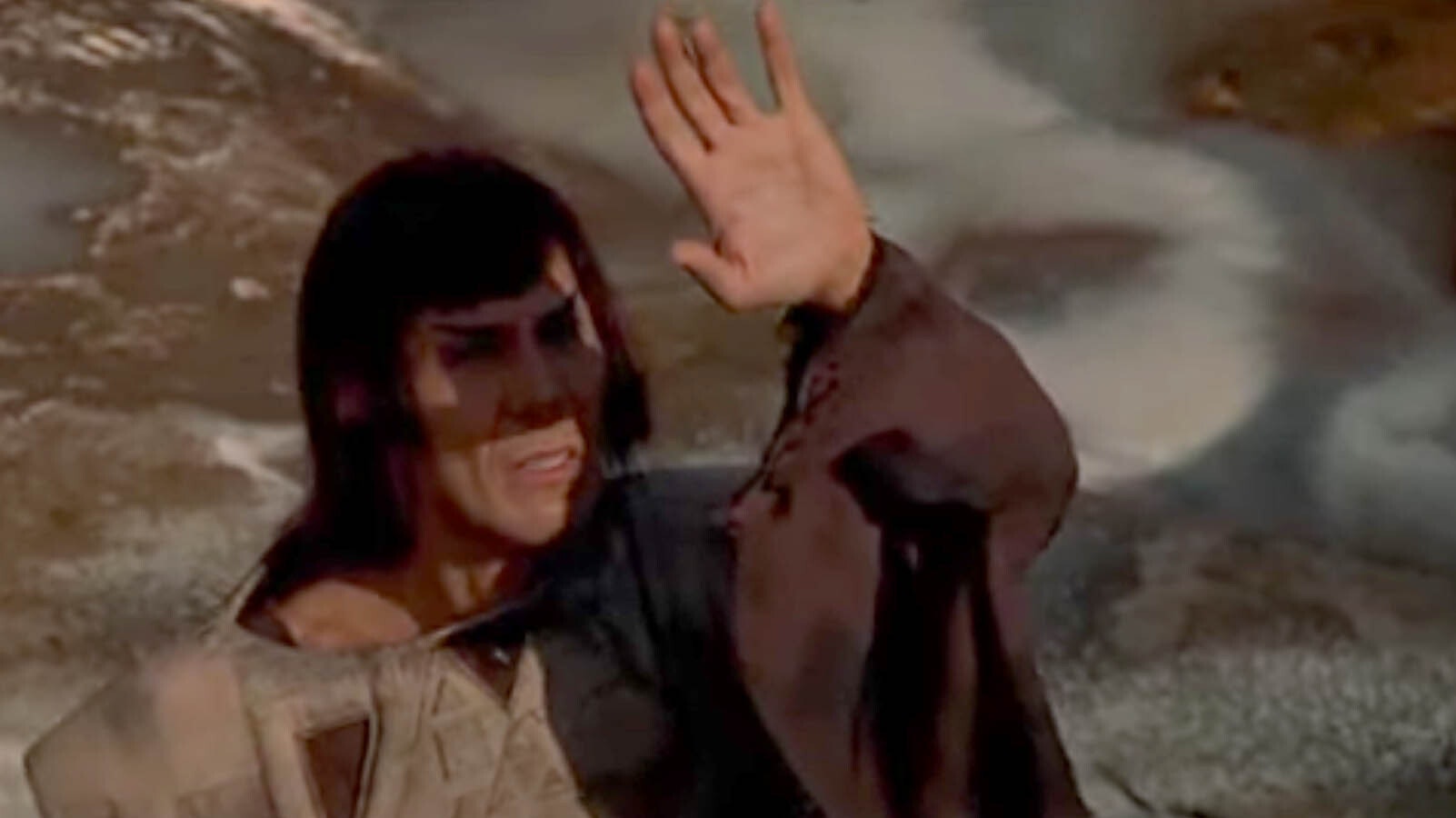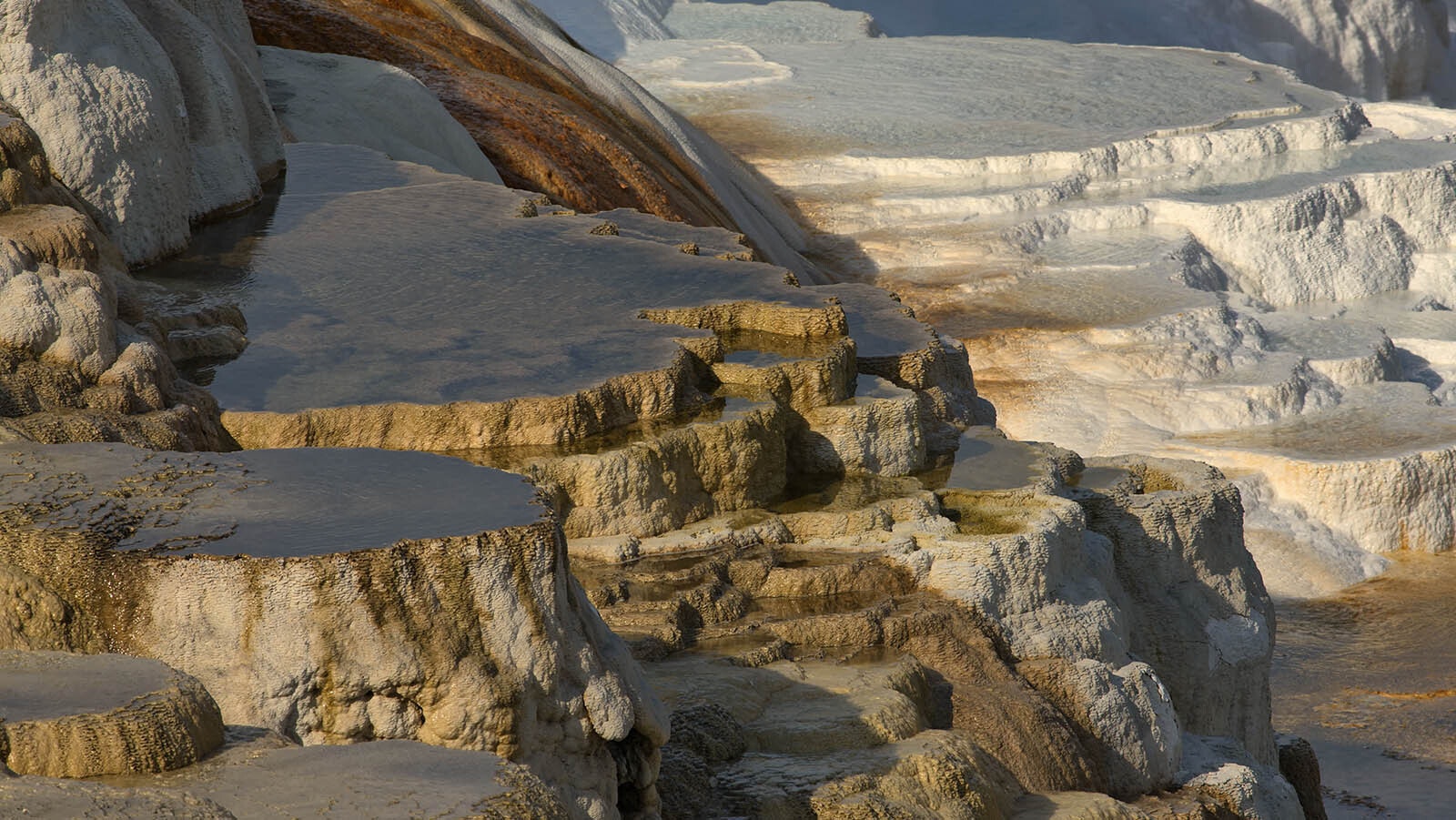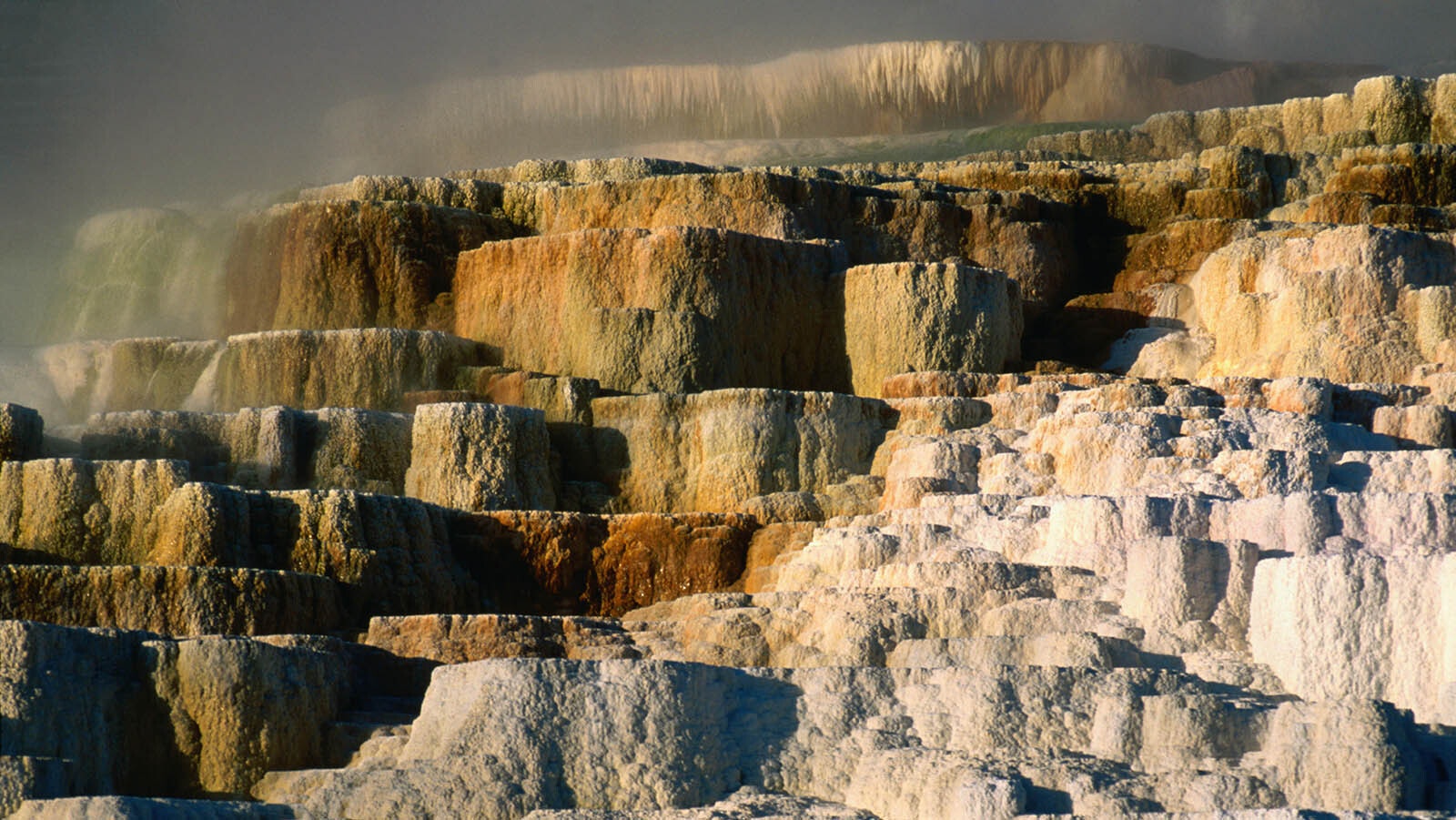In “Star Trek: The Motion Picture,” Mr. Spock in the 23rd century visits his home planet of Vulcan — a hot, steaming, inhospitable-looking landscape.
In reality, legendary Spock actor Leonard Nimoy and a Trekkie film crew were millions of lights years from Vulcan, wherever it may be in the cosmos. The otherworldly setting they chose in August 1978 to replicate Vulcan was the unique thermal pools of Yellowstone National Park.
When the first movie in the Star Trek film franchise opened in theaters in December 1979, it boldly went where no man had gone before (at least with a decent budget). It was a triumphant return for the galaxy-spanning science fiction series, which had been off television for a decade by the time the original cast reunited for their first big-screen adventure.
With millions of dollars at their disposal, audiences followed the voyages of the USS Enterprise, depicted with a visual splendor they’d never seen but always imagined. While the movie’s reception was mixed, it was the catalyst that cemented Star Trek as one of the most renowned sci-fi franchises of modern movie history.
But even the greatest space epics must get back to Earth at some point. For the iconic Mr. Spock, there’s no place like home, but Yellowstone was close enough.
Boldy Going (With A Budget)
Larry Nemecek is a Trekkie, to put it mildly.
A fan since he was a teenager, Nemecek is the author of “Star Trek: The Next Generation Companion,” a former editor of The Official Star Trek Magazine, a consultant for Star Trek: The Live Experience and currently hosts the weekly podcast The Trek Files, based on the personal files of Star Trek creator Gene Roddenberry.
For Nemecek, “Star Trek: The Motion Picture” is unlike any other film in science fiction history, including its own sequels and spinoffs. It was the first time a television show was given an astronomical budget for the silver screen.
While the original “Star Trek” television series was abruptly canceled in 1969 after three seasons, “Star Trek: The Motion Picture” was the result of a massive wave of success from the show’s syndication on television.
“The original ‘Star Trek’ series had been considered a failure by some,” Nemecek told Cowboy State Daily. “They were fighting budgets, they were fighting time, they were fighting all the people that didn't get sci-fi. So, by the ’60s, the failed little show that NBC finally got rid of, they weren't measuring demographics.
“Within a couple of years, looking at the 18- to 35-year-old demographic, the age for the commercial buyers, that's exactly what advertisers wanted.”
The fans’ loyalty must have meant something to the executives at Paramount, but they had a larger, more obvious reason to resurrect Star Trek with a big-budget treatment. The 1977 release of the first “Star Wars” movie made science fiction the new gospel of Hollywood, and every studio wanted its own highly lucrative franchise.
“Star Wars wouldn't have happened without this explosion of Star Trek sci-fi fandom,” Nemecek said. “George Lucas got his funding because of what was happening in the ’70s already. Then, it becomes a mutual domino effect. Now Star Wars is out, and all of Hollywood has to have a sci-fi movie to compete.”
Star Trek pioneered the science fiction genre on television, so there was no better contender to go toe-to-toe with Star Wars in theaters. Paramount gave Roddenberry and director Robert Wise the go-ahead and a budget of almost $40 million.
“It was a big marketing and promotion and licensed, you know, tie-in events,” Nemecek said. “And what's amazing is that it was basically shot on the soundstages at Paramount except for this one location shoot that you're calling me about.”

Visualizing Vulcan
It would be easy to dismiss the planet Vulcan and its logical inhabitants as just another quirk in the pop culture infamy of Star Trek. But for Nemecek and scores of other fans, Vulcan (and its most famous export, Mr. Spock) is the alien foundation of the Star Trek Universe.
“Vulcan and Spock were the reason(s) why Star Trek was revived,” he said. “People love the show. They love Kirk and the whole bit, but Spock was really the calling card and the mystique for a lot of the audience.”
Spock’s home planet had only been featured once before, in the TV series’ Season 2 premiere “Amok Time.” In the episode, the planet is portrayed like every other Star Trek world in the original series: structures of foam rock, matte paintings and a colorful monochrome sky (in Vulcan’s case, it was red).
On that red planet and it’s thin and hot atmosphere (by human standards), Spock fights Captain Kirk to the death — kind of. It wouldn’t be prudent to actually kill off the leading actor of the series.
With an actual budget, the Star Trek production team wanted to make a big impression on fans and general audiences. Part of that was depicting Vulcan in all its otherworldly grandeur, which (in Hollywood) meant an on-location shoot.
“There’s enough old-school movie thinking that if it's going to be this blockbuster, if it's going to be this epic, then they needed to get out on location and give some scope,” Nemecek said.
Their chosen location for Vulcan was Minerva Terrace at Mammoth Hot Springs. Nemecek said the director and producers wanted more than just an aesthetic — they wanted personality.
“They always said Vulcan was ‘a hot planet,’” he said. “They wanted the alien aspects of Minerva Terrace: The liquid, the bubbling, the steam, the rock formations, the geology.”
The original Star Wars went to the deserts of Tunisia as the setting for Luke Skywalker’s home planet of Tatooine. The Star Trek production team considered filming at the ancient temple ruins in Turkey, but decided turning Yellowstone into Vulcan was cheaper, easier and more efficient.
Minerva Terrace wasn’t exactly undiscovered country, but Nemecek noted it was an ideal location. Rather than film Vulcan in the deserts of California, a much simpler solution, the Star Trek team wanted the authentic otherworldliness of Yellowstone.
“They could have gone to Death Valley,” he said. “There are a lot of interesting places they could have gone to, but they didn't. They got to Minerva Terrace.”
Spock On The Boardwalk
“On Aug. 8, 1978, the day after Star Trek production began at Paramount, an 11-person second unit took off for Yellowstone to capture that jigsaw piece of the Vulcan scenes on film,” wrote Gene Roddenberry in his 1980 “The Making of Star Trek: The Motion Picture.”
“This shot was part of one of the most complex shots of the movie,” he said.
Incidentally, the book chapter is entitled “Welcome to Vulcan; Please Don’t Feed The Bears.”
The first step was securing permission to get the shot, which Roddenberry described as “no easy feat in a national park at the height of tourist season.”
Filming was limited to what could be done on the existing boardwalks, although Roddenberry claims the National Park Service built an additional platform for the movie makers to use.
“The coolness of Minerva Terrace was offset by the fact that it was a fragile outdoor environment in real nature,” Nemecek said. “Real tourists would come by, and they couldn't disrupt the park too much.”
Only one actor traveled to Yellowstone for the shoot, but that actor was Mr. Spock himself, Leonard Nimoy. It was the first scene he shot for the film, making it the first time he physically returned to his iconic role since the show was canceled a decade earlier (other than the short-lived animated series that ran from 1973-1974).
If any secrecy was involved in the shoot, all bets were off when Nimoy showed up in the middle of one of the nation’s busiest tourist attractions. Visitors wouldn’t have to search for Spock to surmise that movie magic was underway — he was right there.
“Some were able to guess immediately that it was Star Trek,” Roddenberry wrote, “since not only is Leonard Nimoy’s face visible, but there just aren’t too many people with pointed ears in front of cameras unless they’re playing the part of a Vulcan.”
Seeing someone as famous as Nimoy during the peak of Yellowstone’s summer season would be headline news in 2024. But, as far as Nemecek knows, they didn’t incur the wrath of conniving tourists who tried to crash the shoot, and there were no severe interruptions.
“I would think the word would get out,” he said about today’s social media landscape. “But the world moved a little smaller and people weren't quite as media savvy in 1978.”
There was one amusing sign of solidarity. Roddenberry said “the kids working for the summer” at the Mammoth Hot Springs Hotel showed their excitement by becoming Vulcans, in their fashion.
“They raided the kitchen for aluminum foil,” he wrote, “from which they manufactured their own version of pointed ears and wore them all day in Mr. Spock’s honor.”
Two Locations And Three Layers Of Vulcan
To get the shot they needed, Nimoy had his back to Minerva Terrace. He performed on a platform designed to look like the base of a Vulcan staircase. The platform had been built in Hollywood and shipped to Yellowstone.
Other set dressings were built as miniatures and placed in the foreground close to the camera.
“The bottom third of the frames shot at Yellowstone (was) actually composed of the miniature stairs, plus some rocks, broken bits of red glass, and a miniature version of an Olmec-like Vulcan statute head,” Roddenberry wrote. “The center of the frame has Mr. Spock … and a bit of the park surrounding him.”
And the top third? That would be a matte painting created by Matt Yuricich, a special effects artist who worked on another little science fiction flick that featured Wyoming, “Close Encounters of the Third Kind.” Yuricich was also on location in Yellowstone to study the landscape.
After three days, the second unit made the voyage home to continue production on the film. That included filming the rest of the scene on Vulcan, with Spock and “the Vulcan Masters.”
“The art department found themselves faced with the problem of the jigsaw puzzle which would match what had taken Mother Nature millennia to construct,” Roddenberry wrote. “Somehow, Yellowstone had to be duplicated on the studio lot.”
To do this, polyurethane foam was sprayed over chicken wire, then sculpted and painted to resemble Minerva Terraces. The lighting and shadows were meticulously set up to match the sun's angle during the on-location shots in Yellowstone, and the mineral pools were replicated with evaporated milk, white poster paint and water with added steam vents.
The set was constructed in “the B tank,” a 110-by-150-foot set designed specifically for water scenes. While the three-day Yellowstone shoot was sunny, there was a three-day delay in Los Angeles because it was “unseasonably cloudy.”
So, the actual shots of Yellowstone in “Star Trek: The Motion Picture” are the closeups of the kneeling Mr. Spock on Vulcan. If it's hard to tell where Minerva Terraces ends and Vulcan begins, that’s the point.
“They wanted Minerva Terrace, but it still had to be Vulcan,” Nemecek said. They didn’t want “someone saying, ‘Oh look, it's Minerva Terrace from Yellowstone.’ They still wanted it to blend into an alien look.”
The Motionless Picture
Completing “Star Trek: The Motion Picture” was an epic endeavor, even by Hollywood standards. Legend says the director, Wise, delivered the “wet prints” of the finished film two days before its premiere.
The initial reception wasn’t great. Critics then and now call the first Star Trek film “the Motionless Picture” and “the Motion Sickness” because of its lack of action and overreliance on special effects.
It was still a solid hit, earning $139 million, but Paramount decided future Star Trek movies would have to be relegated to a much smaller frontier with much smaller budgets. “Star Trek II: The Wrath of Khan” had a budget of $12 million, which was only a third of its predecessor.
“The first words on The New York Times review for ‘Wrath of Khan’ were, “Now that's more like it,”’” Nemecek said.
Critical appraisal of the first Star Trek film has improved over time, especially after a director’s cut overseen by Wise was released in 2001. That cut includes additional footage from the Vulcan scene, adding a little more Yellowstone to the final product.
“A lot of people who love the original series love the original movie,” Nemecek said. “Of all the Star Trek movies after this, some have been better, some much better, some have been not good at all. A lot of people say that the original motion picture was the most ‘science fiction.’ It wasn't just about the Star Trek characters, Klingons, spaceships and Federation aliens. It really was out there.”
Here Nor There
In a 60-year science fiction franchise that stretches across centuries, dozens of planets and an entire galaxy, Yellowstone National Park shouldn’t stand out. And yet, it does.
The three-day shoot in Yellowstone boldly went where Star Trek has rarely gone – outside into the real world. For a series set on alien planets and the interiors of massive spaceships, location shooting wasn’t needed and was rarely affordable.
“The ’60s had tiny budgets,” Nemecek said. “It was a budget break even to go across town to famous Vasquez Rocks the fight with the lizard guy, the Gorn. When they would get out (of the studio), it was a big deal.”
While they didn’t promote it at the time (for obvious reasons), the Star Trek production team would take great pride in their Yellowstone shoot once the film was released.
Nemecek said shooting a scene for the franchise’s first movie on location more than 1,000 miles from Los Angeles might as well have been an interstellar flight by the standards of the Star Trek crew. And they observed the prime directive, disturbing the locals a little as possible.
“This was absolutely the first time they were able to get out and go to a real location outside of LA,” he said. “That was seen as a big, big leap forward.”
Furthermore, it’s a leap Star Trek has rarely taken since. In the six decades of Star Trek, location shooting has remained as rare as a Hero Type-2 Phaser Pistol from the original series (one sold at auction for $250,000 in 2021).
Nemecek could only recall a handful of instances where Star Trek scenes were filmed outside a studio lot. A notable exception was 1986’s “Star Trek IV: The Voyage Home” when the original crew time-traveled to then modern-day San Francisco to rescue a couple of humpback whales.
But even then, San Francisco was San Francisco. The city was used as it was at the time for a story about time travel.
In “Star Trek: The Motion Picture,” Minerva Terrace was the planet Vulcan. That’s why the place and the moment stand out to fans like Nemecek. He’s never been to Yellowstone National Park to see Minerva Terrace, but he and millions of other Trekkies have experienced Vulcan.
“Minerva Terrace stands out,” he said. “That's why it's so memorable to me, even though I've never been there. It was the only location shoot. And it was organic. They felt they needed to get out and do something in that direction (for the movie)."
Even Roddenberry encouraged an “extraterrestrial visit” to the real-world Vulcan in “The Making of Star Trek: The Motion Picture.”
“The next time you’re planning a vacation trip, you may want to consider the planet Vulcan. You won’t need a spacesuit or even a starship – the family car will do,” he wrote. “Simply follow the map until you reach the southeast corner of Montana. You’ll recognize Vulcan when you see it. It looks just like Minerva Hot Springs in Yellowstone National Park. Don’t expect to see Mr. Spock here, though. He left to re-up with Starfleet and hasn’t been seen since.”
With all due respect to Roddenberry, it’s a good thing he wasn’t the helmsman of the Enterprise. Mr. Sulu would’ve known navigating to the northwest corner of Wyoming would be a much easier, more accurate course heading.

Andrew Rossi can be reached at arossi@cowboystatedaily.com.







